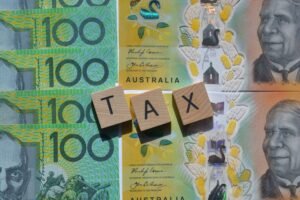Are the Years After U.S. Presidential Elections Good Ones to Be Holding Stocks?
![]() Ujjwal Maheshwari, November 13, 2024
Ujjwal Maheshwari, November 13, 2024
The stock market’s performance during U.S. presidential terms has intrigued investors for decades. U.S. presidential election often marks a unique market cycle due to new policies, economic reforms, and market expectations. But does this post-election period consistently yield good returns for stockholders, and if so, why?
The most anticipated fight for the White House does hold some insights on the performance of the stock market. Certain factors like policies, and reforms announced by the parties affect the phase that follows a successful election.
Investors need to look out for the trends in the market to carefully assess the conditions of the market.
The Four-Year U.S. Presidential Cycle
The U.S. presidential terms have followed a four-year cycle that seems to influence the stock market. This theory called the Presidential Election Cycle Theory, suggests that the stock market performs differently during the four years of a presidential term. Analysts have utilized the data for the past several decades and came to a conclusion where they supported the idea of a stock surge and drop-in during the four years. This theory is widely known and predicated on a stand that shifts the presidential priorities of the candidate to influence the stock market.
Here’s a breakdown of the term through the eyes of researchers:
- Year 1 – This year is often marked by slow or moderate growth as new policies are introduced and uncertainty around their effects arises. Historically, it can be a challenging time for stocks. The party introducing their policies often faces hurdles as their effects are unknown then.
- Year 2 – This is often considered the most volatile year, as policies begin to take effect. With uncertainties hovering over political shifts, especially during the mid-term, this year is more vulnerable to market fluctuations. As the policies begin traction, their full effects are yet to be seen from the public eye.
- Year 3 – This year has historically shown the best market performance, often referred to as the “pre-election rally.” Policies are established, and the government may introduce measures to boost the economy in preparation for the next election cycle. This year also shows strong signs of growth within the country because of an economy that the current administration is shaping.
- Year 4 – According to analysts, this year is generally a period of increased political focus and stability. Politicians may try to implement economically favourable policies for the public to win votes, which can result in stronger markets. However, there is a possibility that beyond economically feasible factors, this year unveils the full performance of the market under the new administration.
For example, LPL Financial’s research on the S&P 500 Index shows that since 1950, the third year of a presidential term has averaged the best returns of about 16%. The first year, however, averages a return closer to 6%, which is lower than the average return for the entire four-year cycle.
Key Economic Factors Impacting Post-Election Market Performance
Policy Changes and Economic Reforms
The first year following the election often introduces shifts in economic policies as the new administration seeks to implement its agenda. For example, certain tax policies, fiscal spending of the government, healthcare reforms, and environmental regulations can influence corporate earnings, consumer spending, and investor sentiment associated with the market.
Reductions in corporate taxes tend to boost corporate profits, potentially driving up the stock prices. Conversely, increased taxes on commodities can reduce net income thereby impacting stock valuations.
Increased government spending can stimulate economic growth and consumer spending. Sectors like construction, manufacturing and technology stand to gain from this factor.
Federal Reserve Policies and Interest Rates
The Federal Reserve often plays a crucial role in shaping the economic landscape of the U.S. post-election. It monitors the economic stability and may adjust interest rates based on the policies introduced by the new administration.
When the Fed keeps interest rates low, borrowing becomes more affordable and many people adopt borrowing trends to strengthen their investment portfolio by opting for many investment options. This benefits businesses and substantially encourages spending. And this environment is usually favourable for stocks. Investors can utilize this phase to craft a strategy that profits them in the long run. However, rate hikes can increase borrowing costs, slowing corporate investment. This will cause lower stock valuations in the market.
Global Events
Global events also play a substantial role in post-election market performance, as seen with COVID-19’s impact in 2020 and the Russia-Ukraine conflict in early 2022. These events can create uncertainty, which may delay economic recovery or disrupt global supply chains. This will significantly affect corporate profits and stock performance.
International Trade Policies
Trade relations and policies are another critical factor. Take an instance where the Trump administration imposed tariffs on Chinese imports. This introduced significant volatility in the stocks, especially for sectors heavily reliant on international trade, such as technology and agriculture.
Shifts in trade policies can impact companies with extensive global operations and this can influence the stock performance of multinational corporations.
Investment Outlook for Stocks Post-Election
Despite the volatility often associated with post-election years, certain sectors may outperform based on the new administration’s policy priorities.
Sectors like renewable energy and technology will have increased demand because apart from the U.S., every major country is looking to capitalize on the trends. And with more regulations on fossil fuels and oil, industries are now opting for clean and green energy solutions like solar, wind, and electric vehicles.
While stocks can offer good returns post-election, it’s crucial to consider the potential for volatility, particularly with policies related to inflation and global events. Inflation risk became prominent and it is also the primary concern for the Federal Reserve. This leads to interest rate hikes that can impact stock valuations negatively.
Higher approval ratings for policies from the administration can often affect the sentiments of the investor positively and offer higher returns. However, lower ratings may lead to increased market uncertainty and volatility. This effect is more noticeable in years with substantial policy shifts or economic challenges.
Is It Too Late to Invest Post-Election?
For many investors, the period immediately following an election is not too late to enter the market. However, it is vital to understand the certain factors that drive the stock market performance.
Sectors aligned with the new administration’s goals and some fundamental sectors like renewable energy and technology may see enhanced growth potential despite the year. So, investors looking to attract short-term profits can opt for this market.
Given that stock markets often see a rise over the long term, short-term volatility may be manageable for investors with a strong and diversified portfolio. Investors must understand their risk appetite before making investment decisions. The years following the U.S. Election hold different possibilities of investments and if the investors understand these trends, they stand to gain from the market conditions.
Looking at how the stock market performed thus far, it’s clear that while post-election years can provide solid investment returns, there are always exceptions. For instance, crises like the 2008 financial crash, or the disruptions in 2020 due to COVID-19, significantly underscore the difficulty in relying on historical trends to predict the market of today. This unpredictability makes the virtue of diversification and a long-term view crucial for investors.
Conclusion: Should You Hold Stocks Post-Election
The post-election period presents both opportunities and risks. While historical patterns suggest that certain years within the four-year cycle may yield better returns, external factors, such as Federal Reserve policies, and global economic conditions, can heavily influence these trends.
For investors considering whether to hold stocks post-election, it’s essential to stay informed on policy changes, and sector growth opportunities.
What are the Best ASX Stocks to invest in right now?
Check our buy/sell tips
FAQs
- How do the U.S. Presidential elections impact international markets?
Policies in the U.S. affect international trade and currency markets. This will impact economies with strong ties trade ties with the U.S.
- Is the stock market always better in the third year of a presidential term?
From a historical point of view, the third year has been a strong year for stocks. However, certain economic and global factors can disrupt this trend.
- Which sectors typically perform best post-election?
Sectors aligned with the new administration’s priorities, such as renewable energy or healthcare, may see enhanced performance.
- Should I avoid investing in stocks during post-election years?
Avoiding stock investments based completely on election cycle predictions is unnecessary. With proper diversification of your portfolio and a focus on long-term growth, you can navigate through the market effectively.
Blog Categories
Get Our Top 5 ASX Stocks for FY25
Recent Posts
The $3m super tax is coming! If you’re invested in equities, here is how it might impact you
It seems during the next 3 years, the $3m super tax will be officially a thing. Itwas blocked by the…
Northern Star Resources (ASX:NST): The $28bn gold miner that stands above them all
Northern Star Resources (ASX:NST) is by far the largest gold company on the ASX, capped at $28bn as of May…
6 ASX stocks you forgot were listed
Here are 6 ASX stocks you forgot were listed Brisbane Broncos (ASX:BBL) No it is not a mistake. This…



